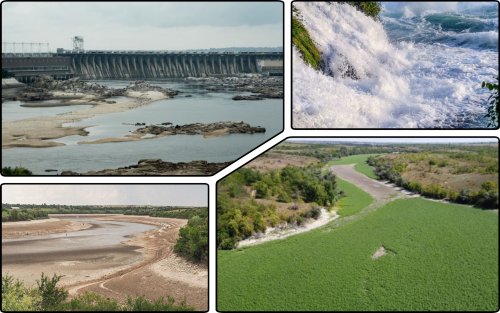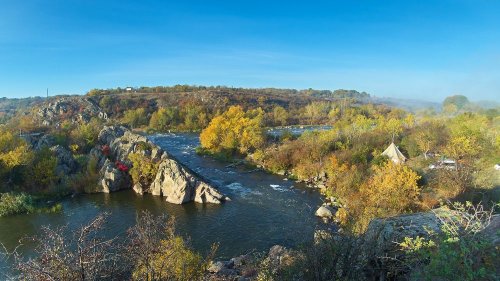After the Russians blew up the Kakhovskaya HPP dam, the reservoir with an area of 2,155 km2 became shallow. Ukraine lost about 15 million m3 of fresh water, i.e. 35-40% of all its reserves. This amount of water would be enough for the needs of all Ukrainians during the year. A number of experts predicted an ecological disaster, because the shallow reservoir could become a desert. However, this did not happen and its bottom was already overgrown with trees 2-4 meters high. Experts discuss the expediency of restoring the Kakhovka HPP and reviving the historical forest – Veliky Lug.
EcoPolitic decided to find out what is currently happening at the shallow reservoir and what its future might be.
Undermining Kakhovska HPP
For the first time the occupiers blew up the firecrackers on the hydraulic structure during the retreat from the right bank of the Kherson region. Due to this, the water level in the Kakhov Sea began to decrease rapidly, which led to several fish deaths. As early as the beginning of 2023, Ukrainian leaders warned of a possible large-scale terrorist attack by the Russians, but international partners failed to force the occupiers to repair or leave the HPP.
The occupiers blew up the reservoir dam on the night of June 6. The water flooded significant territories, which caused the death of people and animals, as well as colossal pollution, in particular of the Dnipro and the Black Sea. Streams of water washed away entire houses, industrial enterprises, cattle burial grounds, etc. Other areas turned into desert, and cities were left without water supply. In addition, the reservoir was a source of water for the cooling pond of the occupied Zaporizhzhya NPP, which ensures its stable operation.

A shallow reservoir could become the source of a new disaster, in particular, the wind dispersal of heavy metals and radionuclides from bottom sediments, as well as dust. This would poison large areas and contribute to the desertification of southern Ukraine. However, the bottom sediments turned out to be safe.
In addition, June turned out to be the most "successful" month for naturally overcoming the disaster, because it is at this time that willows and poplars sow their seeds en masse. In 4 months, the bottom of the reservoir was covered with tree sprouts, which in some places already reach 4 meters, and not ruder weed plants, such as ragweed, or invasive ones, such as Sosnovsky's borschivnik. Cases were even recorded when residents of Nikopol got lost in these thickets and could not get out of them for days.
Future scenarios for the Kakhovsky Reservoir
Now the energy experts are preparing for an experimental project to restore the hydroelectric power station, and in the historical and ecological community they are trying to preserve the new forest, the area of which is actually equal to the entire area of the forests of the Kherson and Zaporizhzhia regions, as well as the "heart" of the Cossack region – Velikiy Lug.

Forests are known to influence air currents and water circulation, which contributes to rainfall. This can help the south adapt to climate change and delay its desertification.
Currently, Ukrainian lawmakers have voted for the ban the use of the land of the shallowed Kahovsky Reservoir for 15 years, and also approved the experimental reconstruction of the HPP. Before the Russian terrorist attack, it generated 334.8 MW of energy.
The issue of energy independence is critical for Ukraine. However, this amount of energy is insignificant, considering the significant area of the HPP reservoir, and it can be replaced by more environmentally friendly sources of generation. In addition, European trends are aimed at restoring the free flow of rivers.
There may not be a miracle forest
Poplars and willows have a striking biological feature, namely rapid growth at the beginning of their life cycle. This is necessary to develop new territories.
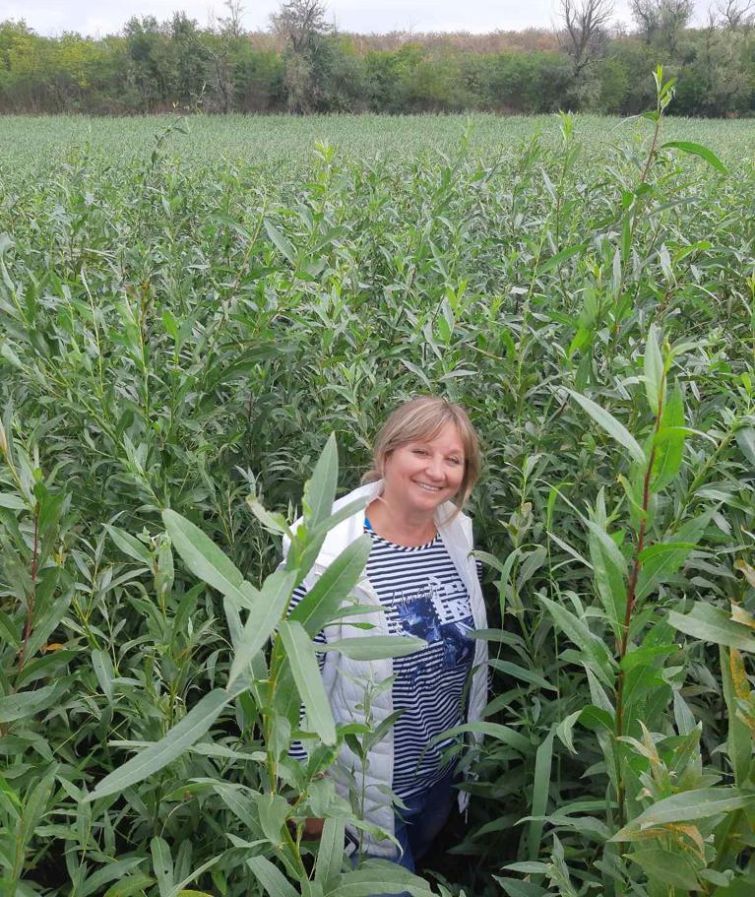
life.pravda.com.ua
Assuming that the new forest will have sufficient water and nutrients in the soil, it will require careful maintenance. If the thickets are not thinned, the trees will not be able to grow normally and the forest will turn into a kind of "brush".
A striking example is the Great Anatolian forest in Donetsk region, where the century-old oaks look like very long and thin sticks. This is an artificial forest where the trees are planted very close to each other and therefore do not have space to grow.
In addition, part of the shoots will surely die, which will increase the risk of forest fires. In the new ecosystem, there is a complete lack of forest care infrastructure, because half a year ago it was the Kakhov Sea. In the event of a fire, it will be almost impossible to extinguish the forest, especially given the close proximity to the front.
Water supply problems
The Kakhov reservoir provided irrigation 94% of the fields are in the Kherson region, 74% in the Zaporizhia region, and 30% in the Dnipropetrovsk region. In addition, Dnieper water was used for water supply in a number of cities, including Kryvyi Rih, Marganets, Pokrov, Nikopol, Mykolaiv, etc. Alternative sources of water, namely wells and springs, will not be able to replace a large-scale reservoir.
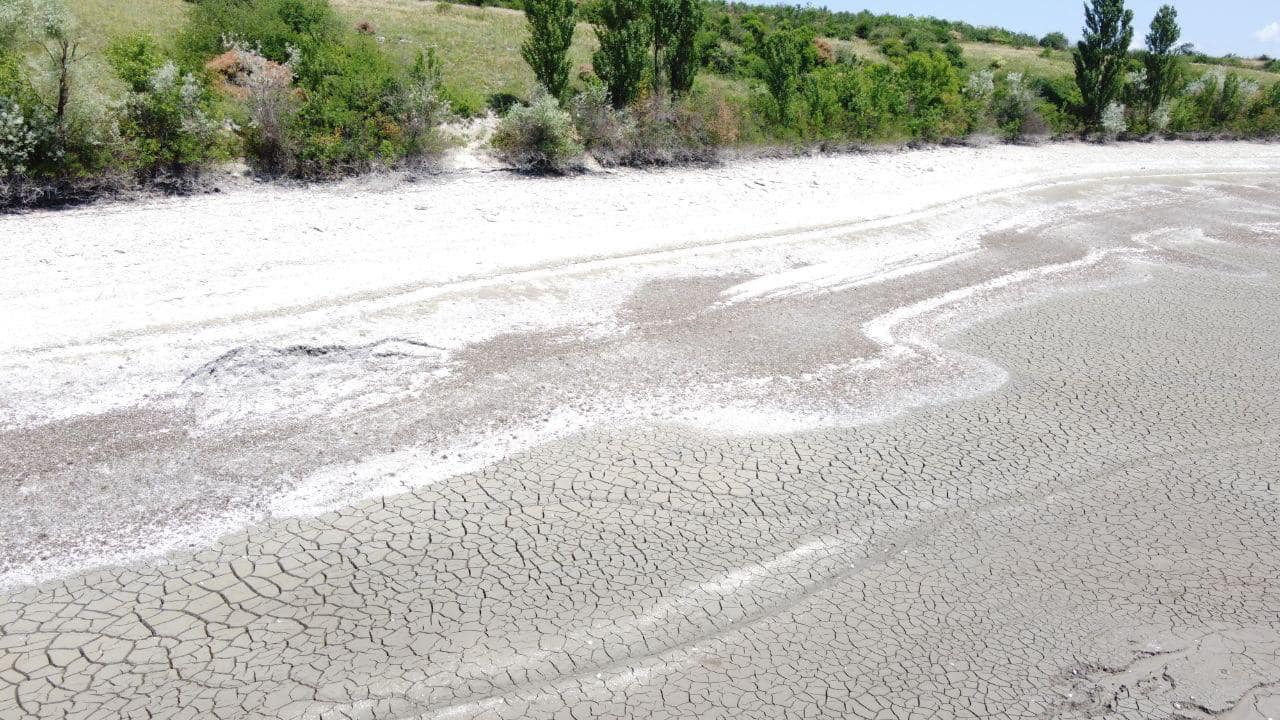
It is worth emphasizing that the powerful industry of Kryvyi Rih and Mykolaiv Oblast also needs significant volumes of water for its production processes and maintenance of tailings with toxic waste.
However, at the end of August, the new water main "Ingulets-Pivdne" was already partially launched for these communities.
The Kakhov reservoir also provided water supply to Crimea, and after the deoccupation of the peninsula this issue will be very acute.
Water for Zaporizhzhya NPP
After the detonation of the HPP, one of the most significant risks was the stable operation of the Zaporizhzhia NPP, in particular the filling of the cooling pond. So far, the water level in it can be maintained within normal limits. However, this will not last forever, and the ZNPP must be provided with a reliable source of water supply.
Alternative offers
The eco-community also offers a compromise warrant, namely the restoration of the reservoir on a much smaller scale with the preservation of a significant part of the new ecosystem. After all, in the mined and war-mutilated south, the revival of agriculture will not happen instantly. In addition, the region will be significantly affected by climate change in the coming decades and needs a new development strategy.
Scientifically based creation of a network of canals, or other alternatives, will ensure the needs of fresh water for people, industry and economy, as well as for the new forest.
Benefits of restoring nature
In the eco-community, the shallow Kakhov reservoir is often compared with Oskilsky in Kharkiv Oblast, whose dam was also blown up by the occupiers during the Ukrainian counteroffensive. In a year and a half after its almost complete shallowing, natural landscapes began to recover, which were inhabited by animals, birds and plants listed in the Red Book. Ukraine's strategy for regional development envisages the bequest of 8.1% of the country's area. Therefore, taking into account the destruction of nature in the occupied territories, new healthy natural ecosystems can have significant advantages, in particular, facilitate Ukraine's path to EU membership.
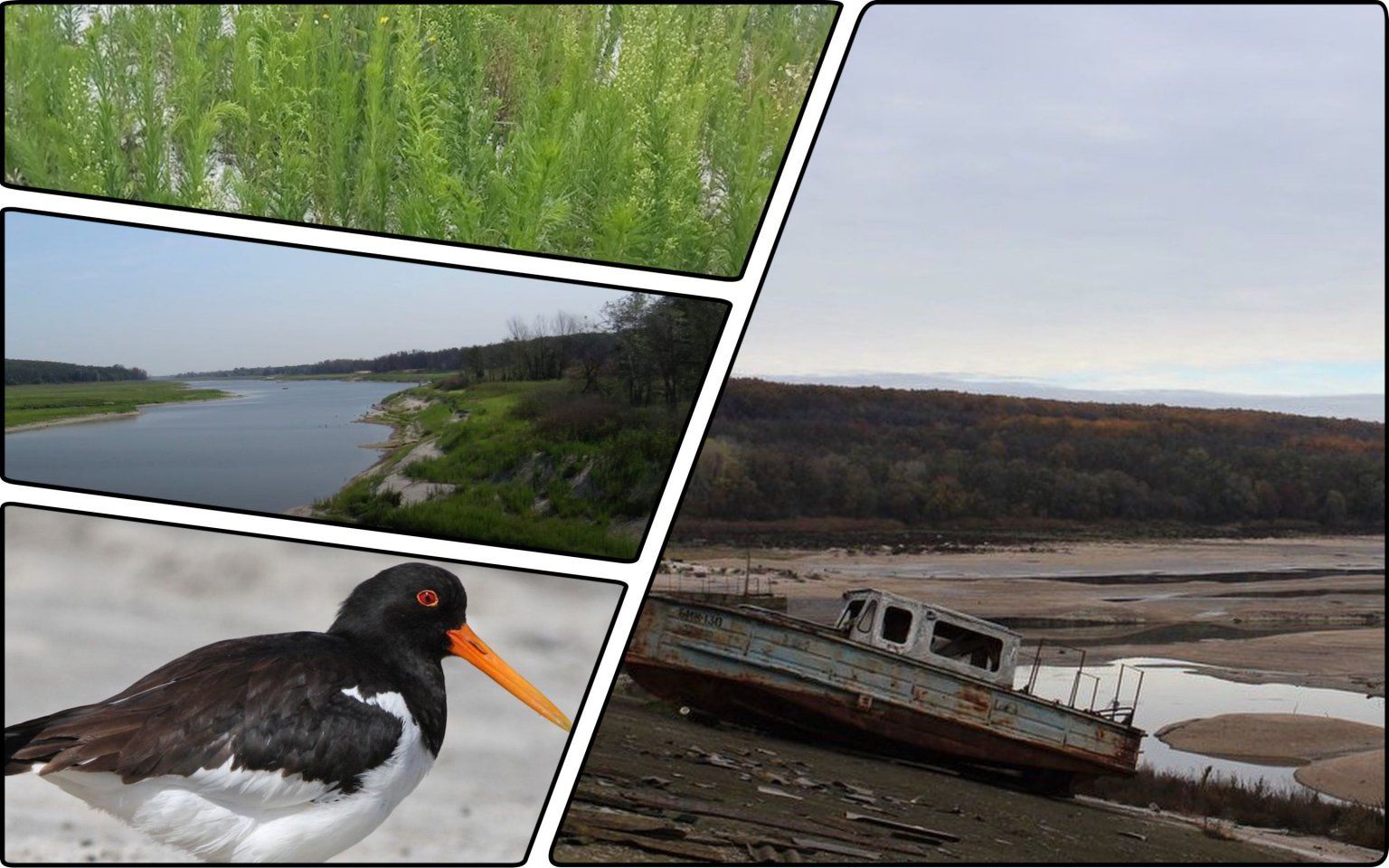
In general, the problem of shallowing of the Kakhovsky Reservoir is a serious threat to the ecological state of a large part of Ukraine. Its solution requires a comprehensive approach, which will include scientific research work, public consideration and the involvement of experts. Only through the joint efforts of the public, government bodies and scientists can success be achieved in the restoration of natural wealth according to the principle of "better than it was".



